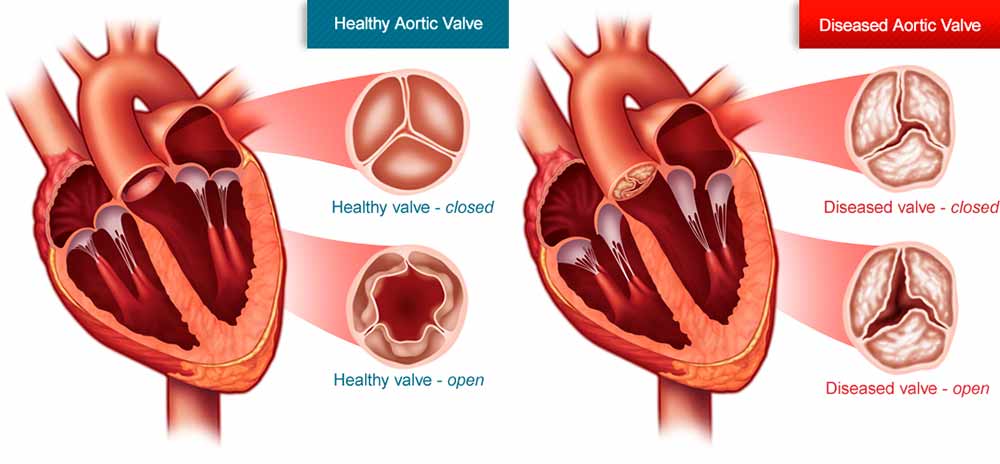
Expert care for aortic stenosis at St. Joseph’s/Candler
Aortic stenosis is a common type of heart valve disease that involves narrowing the aortic valve opening, preventing normal blood flow from the heart to the body. This condition can develop due to various causes, including birth defects, rheumatic fever, radiation therapy, or simply aging. Left untreated, this extra strain weakens the heart and increases the risk of heart failure, stroke, or even death.
Without timely aortic valve replacement, severe aortic stenosis can significantly impact survival, with only about half of patients living beyond two years after symptoms first appear. However, effective treatment dramatically improves outcomes and quality of life.

Symptoms of aortic stenosis
Symptoms of aortic stenosis can vary from person to person. While some people may not experience symptoms initially, others may encounter:
- Chest pain or palpitations (rapid heart rhythms or skipped beats)
- Shortness of breath or difficulty breathing
- Fatigue, weakness, or reduced activity levels
- Lightheadedness or fainting
- Swelling in the lower body
If you experience any of these symptoms, it is crucial that you consult your healthcare provider for further evaluation.
Diagnosis of aortic stenosis
Aortic stenosis is often detected during a routine physical exam when your physician listens to your heart with a stethoscope. If a heart murmur is heard, it could indicate abnormal blood flow. To better understand the how serious the condition is additional diagnostic tests may be recommended, such as:
- Echocardiogram (ultrasound of the heart)
- Cardiac catheterization
- CT scan
- Lung function testing
- Carotid artery ultrasound
These tests help your healthcare team confirm the diagnosis and determine if treatment is necessary.
Treatment options for aortic stenosis
Treatment for aortic stenosis depends on the severity of the condition. Medication and lifestyle changes may help manage mild to moderate symptoms. However, severe aortic stenosis often requires valve replacement to restore proper blood flow and relieve symptoms.
Aortic Valve Replacement (AVR)
At The Heart Hospital at St. Joseph’s/Candler, we specialize in aortic valve replacement procedures. Our expert team has performed more valve replacements than any other hospital in the region. Most AVRs are done through open-heart surgery, where a board-certified cardiothoracic surgeon replaces the diseased valve with an artificial one. We also offer “mini-AVR,” a procedure performed through a smaller incision for less invasive care to minimize patient recovery time.
Minimally Invasive TAVR Surgery
For patients who are considered too high-risk or too ill for traditional open-heart surgery, transcatheter aortic valve replacement (TAVR) offers a less invasive option. Unlike open-heart procedures, TAVR does not require the chest to be fully opened, and the heart is not stopped during surgery. This means patients who might not have qualified for traditional surgery can still benefit from life-saving valve replacement.
Contact The Valve Clinic
If you have been diagnosed with aortic stenosis or suspect you have symptoms of a valve condition, we encourage you to learn more about your options. Call 912-819-TAVR or speak with your physician about visiting the St. Joseph’s/Candler Valve Clinic. Our dedicated team is here to provide personalized care and guide you through the best treatment options for your health.
